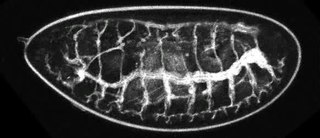 W
WA book lung is a type of respiration organ used for atmospheric gas exchange that is present in many arachnids, such as scorpions and spiders. Each of these organs is located inside an open ventral abdominal, air-filled cavity (atrium) and connects with the surroundings through a small opening for the purpose of respiration.
 W
WA ctenidium is a respiratory organ or gill which is found in many mollusks. This structure exists in bivalves, cephalopods, Polyplacophorans (chitons), and in aquatic gastropods such as freshwater snail and marine snails. Some aquatic gastropods possess one ctenidium known as monopectinate and others have a pair of ctenidia known as bipectinate.
 W
WThe pneumostome or breathing pore is a respiratory opening of the external body anatomy of an air-breathing land slug or land snail. It is a part of the respiratory system of gastropods.
 W
WAn insect's respiratory system is the biological system with which it introduces respiratory gases to its interior and performs gas exchange.
 W
WA siphon is a tubular organ of the respiratory system of some insects that spend a significant amount of their time underwater, that serves as a breathing tube.
 W
WA siphon is an anatomical structure which is part of the body of aquatic molluscs in three classes: Gastropoda, Bivalvia and Cephalopoda.
 W
WThe trachea, also called the windpipe, is a cartilaginous tube that connects the larynx to the bronchi of the lungs, allowing the passage of air, and so is present in almost all air-breathing animals with lungs. The trachea extends from the larynx and branches into the two primary bronchi. At the top of the trachea the cricoid cartilage attaches it to the larynx. The trachea is formed by a number of horseshoe-shaped rings, joined together vertically by ligaments over their substance and by the trachealis muscle at their ends. The epiglottis closes the opening to the larynx during swallowing.